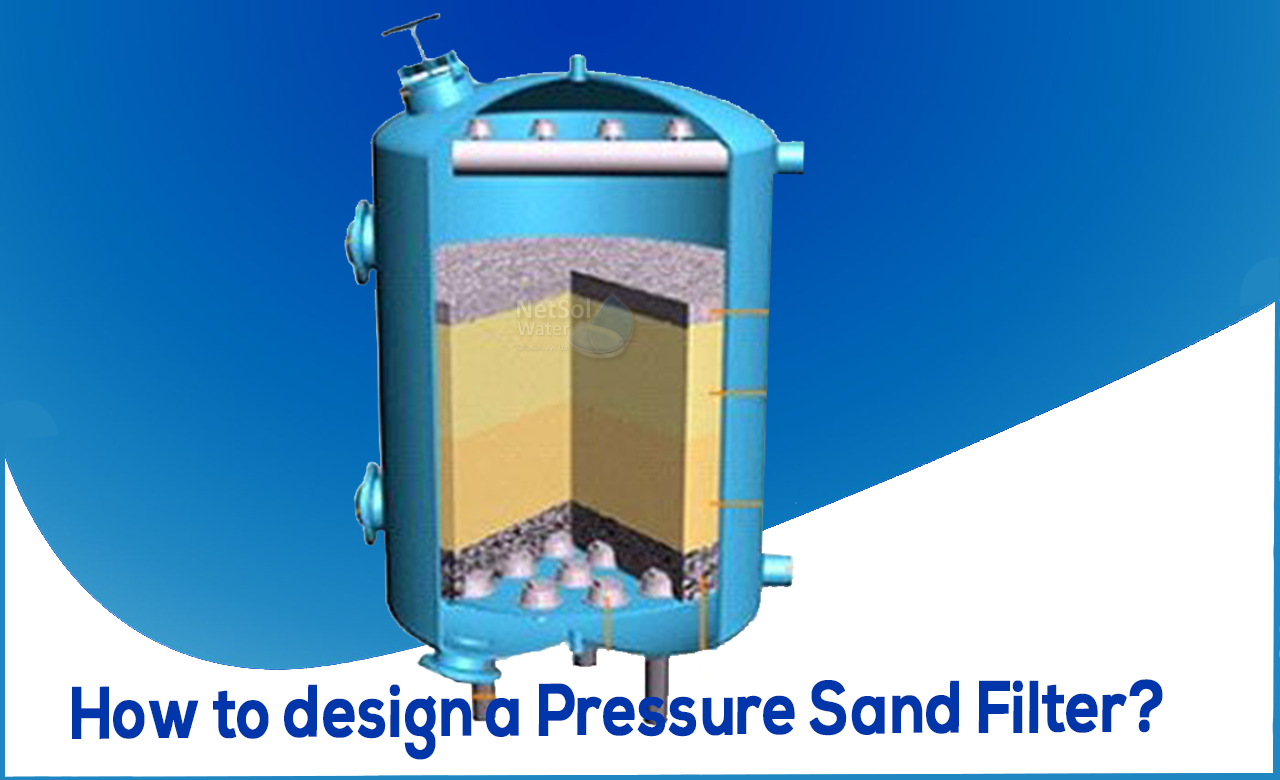How to design a pressure sand filter?
The most common way for removing turbidity from water is to use pressure sand filters. The Pressure Sand Filter is made up of several layers of sand of various sizes and specific gravity. These filters are made to remove turbidity and suspended particles from feed water with the least amount of pressure drop possible. These filters are made in order to meet the needs of the process. With face piping and accompanying Valves, these filters are available in Mild Steel, FRP, or SS construction.
Construction of a pressure sand filter
A pressure sand filter is made up of a vertical or horizontal pressure vessel with a set of frontal pipe work and valves, graded silica quartz sand supported by layers of graded under bed consisting of gravels and pebbles, a top distributor to distribute the incoming water uniformly throughout the cross section, and an under drain system to uniformly collect the filtered water.
Process involved
The suspended debris is retained on the sand surface and between the sand grains just below the surface after being treated with a coagulant such as alum or poly electrolyte while raw water passes down through the filter bed. Over time, the loss of head increases steadily, and the flow decreases if the pressure drop over the filter becomes excessive. The filter is subsequently removed from service, and the filter media is cleaned using flow reversal, often known as backwash.
The backwash procedure is occasionally preceded by air scouring via agitation through the under-drain system to assist in cleaning the bed. The scrubbing action of the air scouring agitates the sand, loosening the captured particles. The filter is now ready to be reinstalled in the system.
Design of a pressure sand filter:
Designing of pressure sand filter involves several steps which include:
1. Design of filter units:
a. Rate of filtration is assumed between 3000-5000 L/m2h
b. Quantity of filtered water required per hour
c. Filter area
d. Length to breadth ratio is taken to be 1:3
e. If area comes out to be greater than 50m2, according to the area no. of filter units goes on increasing
2. Design steps involved for estimation of sand depth:
The depth of sand can be checked against breakthrough of flock through the sand bed by calculating the minimum depth required by Hudson formula:
Q*D3*H/L = Bi*29323
Here,
D = sand size in mm,
H= terminal head loss in metres,
Q = filtration rate in m3/m2/h,
Bi = break through index whose value ranges between .00004 to .006 depending on response to coagulation and degree of pre-treatment in filter influent and
L = depth of sand bed in metres
3. Estimation of gravel size distribution:
A size graduation of 2mm at the top and 50mm at the bottom is assumed. Gravel layer of size (d) mm and the requisite depth (l) in cm of a component can be computed from the following empirical formula:
l = 2.54 * k *(log d),
Where k varies from 10 to 14
4. Design of wash water trough:
- Spacing of troughs = width of trough/number of trough
- Discharge per trough = total discharge/number of troughs
- Water depth (y) at upper end is given by
Q= 1.376*b*y3/2
- Depth of trough = free board + water depth.
5. Designing of under drainage system:
a. Ratio of length to diameter of laterals should not exceed 60; Spacing of laterals should be between 150 to 300mm
b. Diameter of perforation in the laterals should be between 5 to 12mm.
c. Spacing of perforation varies from 80mm to 200mm.
d. Ratio of total area of perforations in the under drainage system to the total cross sectional area of laterals should not exceed 0.5 to 0.25
e. Ratio of total area of perforations in the under drainage system to the entire filter area may be as low as 0.002 to 0.003
f. Area of manifold should be preferably 1.5 to 2 times total area of laterals to minimize frictional losses and to give best distribution.
6. Computation of total depth of filter box:
Provide water depth of 1.2m and a free board of 0.3m.
Now total depth of filter tank = free board+ water depth+ depth of sand+ depth of gravel+ depth of under drain.
For more information on sewage treatment plant manufacturing, contact: +91-9650608473 or you can write us: enquiry@netsolwater.com to Netsol Water!




